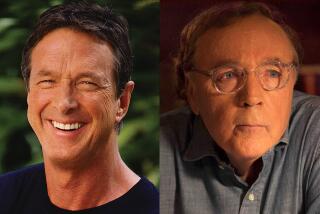Adriana E. Ramírez’s Great American Novel: ‘The Princess Bride’ by William Goldman
- Share via
In the book “The Princess Bride” by William Goldman — upon which the same-titled film was based — never has “life isn’t fair” come with such mirth.
Heroes die (sometimes twice!). Beautiful princesses turn out to be quite stupid. Invincible giants forget how to fight a single man. Virtuoso swordsmen grow lazy with alcoholism. Royalty engineer wars for personal gain. Henchmen carry out orders and study pain. Torture and surprise resurrections abound. Being smart won’t even save you.
Yet, unlike a more serious period piece, “The Princess Bride” keeps its tongue firmly planted in cheek.
Even the writer is delightfully unfair. Goldman, in a slightly fictional version of himself, directly addresses the reader in a running commentary/meta-narrative that provides the book’s structure, promising only the “good parts” and willfully omitting crucial scenes, most notably the reunion between the titular princess and her farm-boy-cum-Dread Pirate.
Our Critics at Large pick their Great American Novels
“This book says ‘life isn’t fair’ and I’m telling you, one and all, you better believe it,” writes Goldman halfway through.
“I’m not trying to make this a downer, understand,” he continues. And he’s not. Because more than anything, “The Princess Bride” is fun (“HELLO! MY NAME IS INIGO MONTOYA! YOU KILLED MY FATHER! PREPARE TO DIE!”) — even in its saddest, most difficult parts.
By writing only the “good parts,” Goldman enters into a very postmodern American sensibility.
— Adriana E. Ramirez
So what makes it my Great American Novel?
As far as connecting to our reality, Goldman’s “hot fairy tale” wouldn’t seem the obvious choice. There are no thoughtful considerations of class. Racial diversity is nonexistent — all characters are presumed white (even Fezzik the Turkish giant). The book takes place in a European country. There are monarchs and pirates and the occasional Rodent of Unusual Size.
Yet by writing only the “good parts,” Goldman enters into a very postmodern American sensibility. “The Princess Bride” exploits all the hallmarks of the adventure genre — master fencers, terrifying beasts and a love that transcends death — while avoiding any annoying backstory or political history. The book moves on character, action and humor. In bending narrative expectation, Goldman captures an evolving American mind, taking the best parts of old-world stories and remixing them into something quick, uncomplicated and digestible.
“The Princess Bride” is also true to the concerns of 1973, the year of its original publication. One can see the political antics of the ’60s and ’70s echoed in Prince Humperdinck and Count Rugen as they plan and execute an elaborate scheme to force their country into war.
“The wrong people die, some of them,” Goldman and the phrase seems as poignant today as it would have then.
But I’m not trying to make this a downer. “The Princess Bride,” more than anything, is about the joy of telling a story. About a father sitting down with his son and reading “only the good parts.”
It’s a fast-paced and highly quotable swashbuckling adventure. But it’s also about love, letting go of the pesky details and wanting more than the hand you’re dealt, especially when life proves unfair.
There’s nothing more American than that.
Ramirez is one of our Critics at Large
More to Read
Sign up for our Book Club newsletter
Get the latest news, events and more from the Los Angeles Times Book Club, and help us get L.A. reading and talking.
You may occasionally receive promotional content from the Los Angeles Times.






